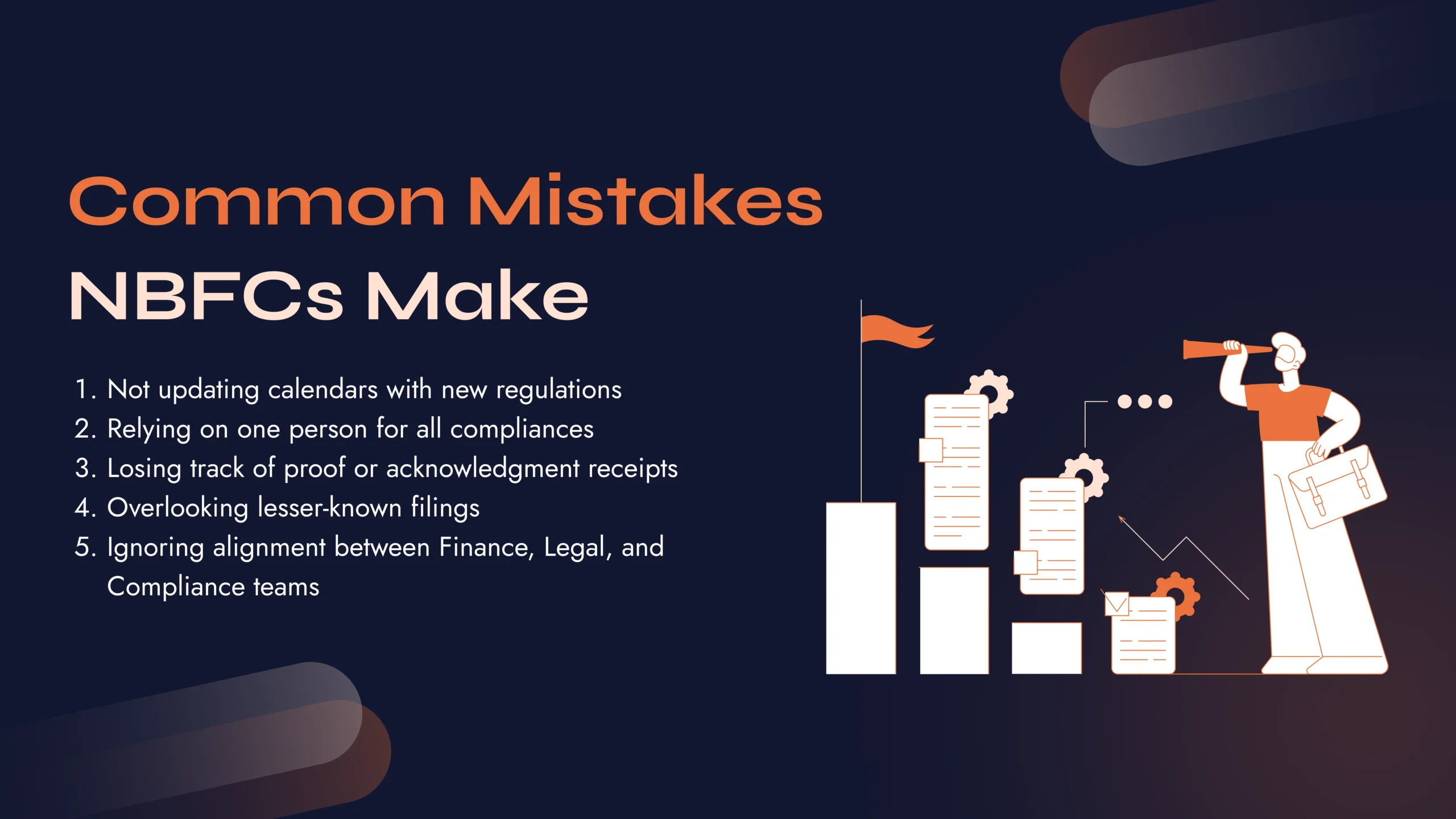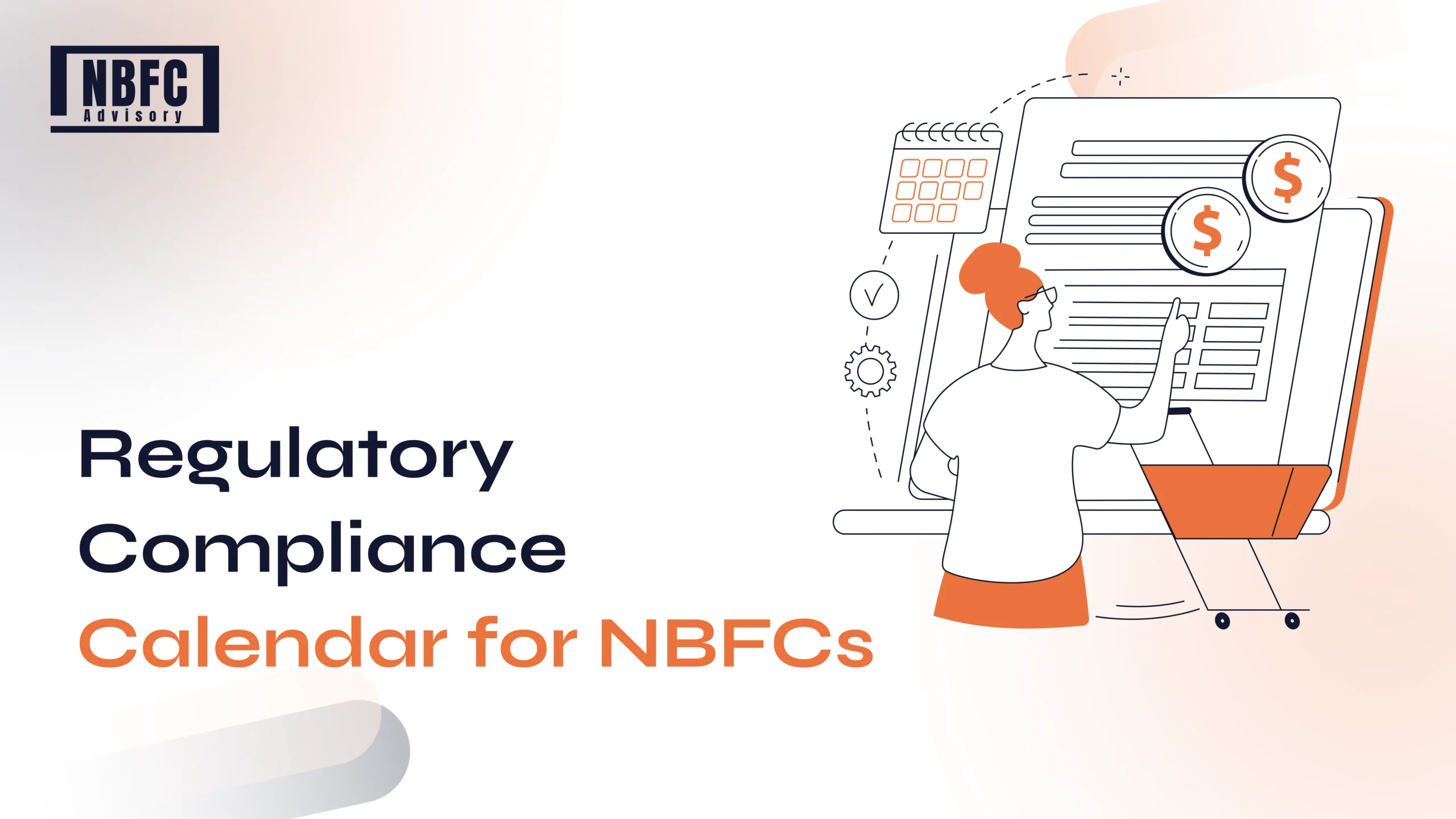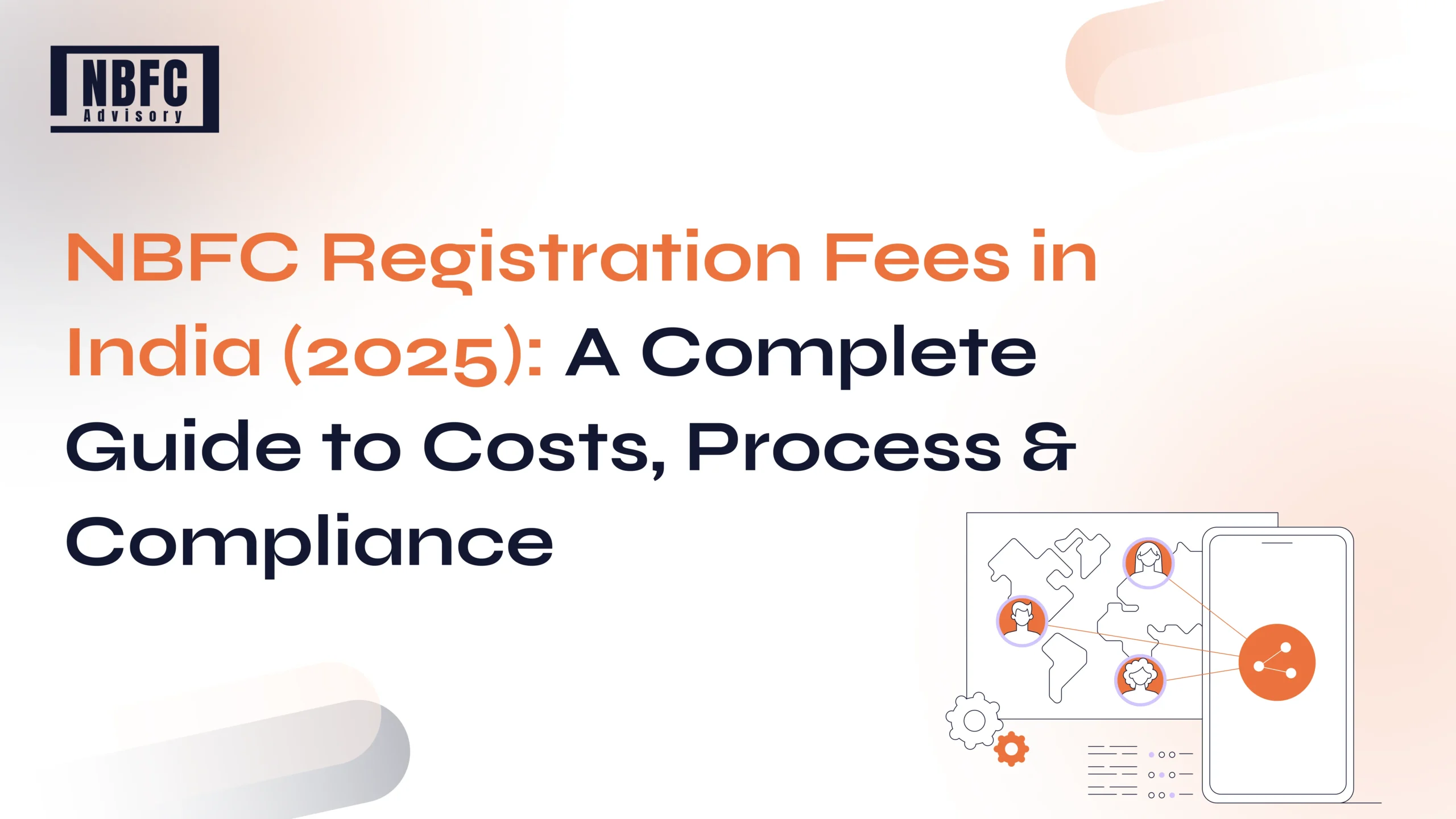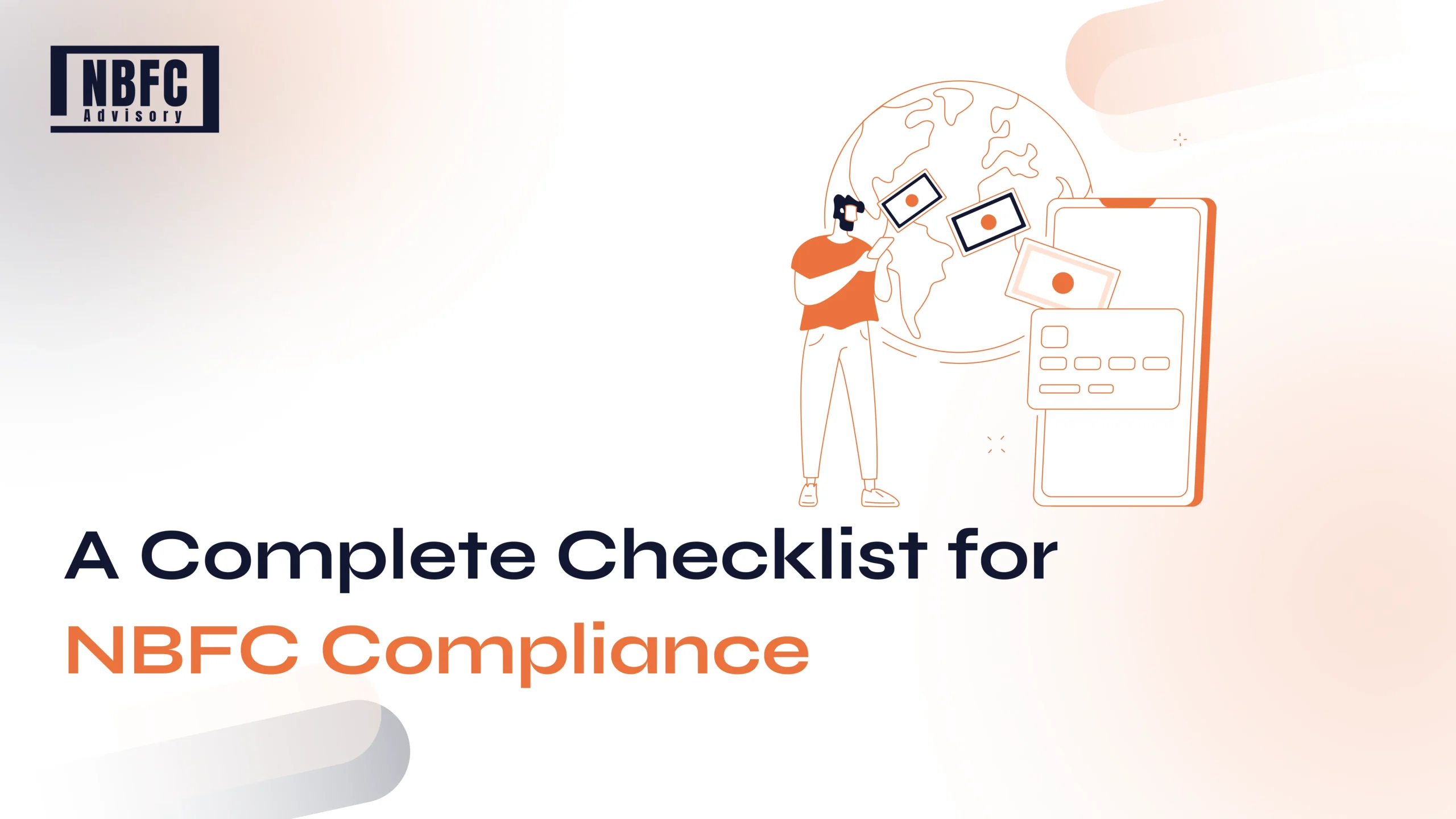Keeping up with NBFC compliances can feel like running on a treadmill that never stops. New circulars, changing formats, different portals — and multiple regulators watching closely.
One missed deadline can trigger more than a penalty; it can bring inspection notices or reputational risk. That’s why every responsible NBFC, big or small, needs one essential management tool: a regulatory compliance calendar.
It’s not just a spreadsheet. It’s a system that gives structure to your compliance journey, helps your team stay prepared, and keeps you one step ahead of the regulator.
What is a Regulatory Compliance Calendar?
A Regulatory Compliance Calendar is a structured, time-based tracker that captures every filing, return, and certification an NBFC must complete across all regulatory bodies.
It answers five core questions for every compliance task:
- What needs to be done?
- Who’s responsible?
- When is it due?
- Which regulator requires it?
- Has it been completed and documented?
With these answers in one place, compliance stops being a scramble. Your NBFC gains control, transparency, and foresight.
Why Every NBFC Needs One
NBFCs operate under strict oversight from the RBI, MCA, Income Tax Department, and FIU-IND. Each has unique compliance requirements.
Without a structured system, deadlines overlap, updates get missed, and teams end up reacting instead of planning.
A well-designed compliance calendar helps your NBFC:
- Prevent missed filings and penalties
- Assign accountability clearly
- Simplify audit and inspection preparation
- Build trust with regulators and investors
- Improve internal coordination between departments
In short, it keeps your NBFC compliant and credible.
Key Components of an NBFC Compliance Calendar
A good NBFC compliance calendar pulls together every reporting and filing your company is expected to complete during the year. It keeps everything in one place so deadlines aren’t missed and nothing slips through the cracks.
Here’s what it should cover:
RBI Compliances
This is the heart of every NBFC’s regulatory work. Your calendar should list:
- Quarterly and yearly returns like DNBS-01, DNBS-02, and DNBS-03
- Asset Liability Management (ALM) statements
- Statutory Auditor Certificates confirming compliance with RBI norms
- Reports on prudential norms and capital adequacy
- Credit concentration and exposure statements
- CRILC or CIC data submissions required by the RBI
These filings show the regulator that your NBFC is financially sound and following all prudential standards.
MCA Filings
As an NBFC registered under the Companies Act, you’ll also have regular filings with the Ministry of Corporate Affairs.
Your calendar should include:
- AOC-4 for financial statements
- MGT-7 for annual return
- DIR-3 KYC for director identification and verification
- Board resolutions and policy adoption records
Tax and GST Filings
Tax deadlines can overlap with regulatory ones, so it’s best to track them together.
Include:
- Monthly and quarterly TDS payments and returns
- GST filings such as GSTR-3B and GSTR-1
- Advance tax payments based on projected income
- Tax audit and income tax return due dates
FIU-IND / AML Reporting
NBFCs must meet anti-money laundering (AML) and FIU-IND obligations. Your calendar should note:
- Suspicious Transaction Reports (STR)
- Cash Transaction Reports (CTR)
- Counterfeit Currency Reports (CCR)
These help ensure your NBFC follows India’s anti-money laundering laws and stays on the right side of FIU-IND regulations.
Internal Governance
Internal controls are just as important as regulatory filings.
Your calendar should also track:
- Scheduled board meetings and audit committee sessions
- Policy reviews for KYC, credit, and risk
- Timelines for internal audits and statutory audits
Including these keeps your leadership, compliance, and audit teams in sync throughout the year.
How to Build an Effective Compliance Calendar
Building one isn’t complicated — it’s about consistency. Here’s how:
- List all applicable regulations. Cover RBI Master Directions, Companies Act, PMLA, Income Tax, and GST.
- Note frequency and due dates. Identify what’s monthly, quarterly, or annual.
- Assign clear ownership. Every task should have a responsible person or team.
- Set reminders. Automate alerts at least 10 days before deadlines.
- Keep documentation proof. Store acknowledgment receipts and returns digitally.
- Update regularly. Revise whenever new RBI circulars or MCA notifications are released.
Example Structure
| Regulator | Compliance | Frequency | Due Date | Owner | Status |
| RBI | DNBS-2 Return | Quarterly | 21 days after quarter-end | Compliance Head | Filed |
| MCA | AOC-4 | Annual | 30 days post AGM | Company Secretary | Pending |
| Income Tax | TDS Return | Quarterly | 31 Jul, 31 Oct, 31 Jan, 31 May | Finance | Filed |
| FIU-IND | STR Report | Ongoing | As detected | AML Officer | In progress |
| Internal | Audit Committee | Quarterly | 1st week post quarter | Company Secretary | Done |
Common Mistakes NBFCs Make
Even well-managed NBFCs slip up because of small errors like:

A well-structured compliance calendar fixes all of this.
Making Compliance Part of Daily Operations
A compliance calendar shouldn’t sit idle — it should live in your NBFC’s workflow.
Here’s how successful companies do it:
- Weekly or monthly calendar reviews
- Department heads discussing upcoming filings
- Internal audit teams validating submissions
- Board-level visibility on compliance status
When the calendar becomes routine, compliance becomes effortless.
The Role of Technology
Manual trackers work fine for small setups, but growing NBFCs need digital tools.
Use:
- Google Sheets or Excel with shared access
- Trello, Notion, or Asana for task management
- Automated alerts via email or Slack
The goal isn’t to complicate the process it’s to make it visible, accessible, and always up to date.
The Data Behind NBFC Compliances
Understanding the scale helps explain why structure matters.
- 621+ compliances a year: A TeamLease RegTech report found that a typical NBFC in India faces over 621 compliance actions annually, across multiple laws.
- Sector size: As of 2023, the asset size of NBFCs in India reached USD 326 billion, with a compound annual growth rate (CAGR) of around 15% over the past few years.
- Contribution to the economy: PwC India’s study notes that NBFCs contribute over 12.6% to the country’s GDP and play a vital role in credit delivery.
This data makes one thing clear: with scale comes scrutiny. The more critical the sector, the more vital it becomes to maintain strict, structured compliance.
How Our Advisory Supports NBFCs
We help NBFCs build end-to-end compliance systems that align with their business models and categories (ICC, MFI, Factor, or UL).
Our team assists with:
- Designing customized compliance calendars
- Setting up automated reminders and reporting dashboards
- Conducting quarterly compliance health checks
- Reviewing processes for RBI, MCA, and FIU-IND
- Training compliance officers and team leads
Our approach is practical: we build systems that work in real life, not just on paper.
Final Thoughts
A Regulatory Compliance Calendar is one of the simplest yet most powerful tools your NBFC can implement.
It transforms compliance from a reactionary task into a structured discipline. It protects your license, builds regulator confidence, and strengthens internal governance.
In today’s NBFC ecosystem, where trust and transparency are everything, being compliant isn’t optional it’s your biggest competitive edge.
Need expert guidance? Get in touch with our consultants today.
📞 Call NBFC Advisory: +91 93287 18979
🌐 Visit: nbfcadvisory.com
FAQs
What are the main NBFC compliances?
Key ones include RBI returns (DNBS forms), ALM statements, auditor certificates, MCA filings (AOC-4, MGT-7), FIU-IND reporting, and tax obligations.
How often should the compliance calendar be updated?
Review it quarterly or whenever new regulatory updates are issued by the RBI, MCA, or FIU-IND.
Can it be maintained digitally?
Yes. Use cloud tools like Google Sheets, Asana, or compliance software with multi-user access and reminders.
Who owns the compliance calendar in an NBFC?
Usually, the Compliance Head or Company Secretary manages it, with coordination from finance and audit teams.
What happens if an NBFC misses a filing?
Delays can trigger fines, inspection notices, or even business restrictions under RBI’s Scale-Based Regulation framework.
Are compliance calendars standard across NBFCs?
No, they vary by NBFC category. For example, MFIs and Factors have unique RBI returns.
How can smaller NBFCs stay compliant without big systems?
Start simple: use Excel or Google Sheets with proper reminders. What matters is consistency, not complexity.
Why do regulators focus heavily on NBFC compliances?
Because NBFCs now handle a large share of India’s credit flow — timely compliance ensures stability in the financial ecosystem.




